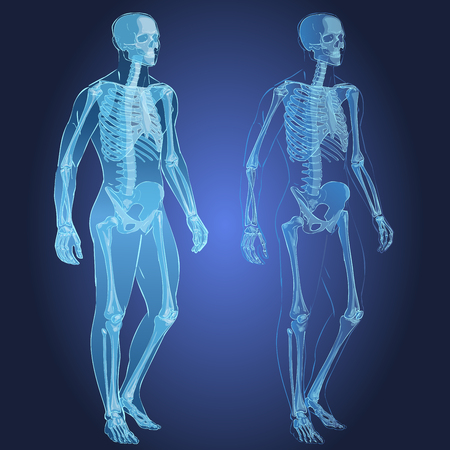1. Understanding the Importance of Goal Setting in US Physical Therapy
When recovering from surgery, physical therapy plays a huge role in getting back to your everyday life. In the United States, setting clear and measurable goals is a big part of how physical therapists help patients make progress. But why is this so important? Let’s break it down.
Why Set Goals During Physical Therapy?
Goals give both patients and therapists a clear direction. Instead of just hoping for improvement, you know exactly what you’re working towards. This approach is popular in American rehab clinics because it helps everyone stay focused and motivated.
How Goal Setting Works
American physical therapists often use the SMART method to create goals that are:
| Letter | Meaning | Example in Rehab |
|---|---|---|
| S | Specific | “Walk 100 feet without support” |
| M | Measurable | “Bend knee to 90 degrees” |
| A | Achievable | “Climb five stairs with cane” |
| R | Relevant | “Regain ability to drive safely” |
| T | Time-bound | “Accomplish within four weeks” |
The Role of Motivation in Recovery
When you can see your progress—like walking further or lifting more weight—it gives you a confidence boost. Therapists also feel encouraged when their patients hit these targets. This teamwork attitude is a big part of rehab culture in the US.
Benefits of Goal Setting for Patients and Therapists Alike:
- Keeps everyone on the same page about what success looks like
- Makes tracking progress easier during each session
- Helps adjust treatment plans based on real results, not just guesswork
- Makes therapy feel more personalized and meaningful for every patient
If you’re starting post-surgery therapy in the US, expect your therapist to talk with you about your personal goals right from the start. This partnership ensures that every step you take leads you closer to getting back to what matters most in your daily life.
2. Collaborative Goal Setting: Patient and Therapist Roles
Understanding the Patient-Centered Approach in the US
In the United States, post-surgery physical therapy is rooted in a patient-centered approach. This means that both patients and therapists work together to set meaningful goals that reflect each patient’s unique needs, lifestyle, and values. The process goes beyond just medical guidelines—it incorporates what matters most to you in your daily life, whether its returning to work, resuming hobbies, or simply moving without pain.
The Importance of Shared Decision-Making
Shared decision-making is a core part of American healthcare culture. During your recovery, therapists encourage you to take an active role in your treatment plan. You are invited to share your preferences, concerns, and personal goals. This collaboration ensures that therapy sessions are tailored specifically for you, making your recovery journey more motivating and effective.
How Patients and Therapists Work Together
| Patient’s Role | Therapist’s Role |
|---|---|
| Communicate personal goals and expectations | Listen actively to understand patient needs |
| Share concerns or barriers to recovery (like pain or scheduling) | Provide expert advice on realistic timelines and strategies |
| Participate in creating the care plan | Design individualized exercises and milestones |
| Track progress and give feedback about what works or doesn’t | Adjust the therapy plan based on patient feedback |
Individualized Care Plans: What Makes Them Unique?
No two patients are exactly alike. In the US, therapists recognize this by developing care plans that fit your specific situation. For example, if youre a teacher who needs to stand for long hours, your goals may focus on building stamina and balance. If youre an older adult wanting to garden again, the plan might emphasize flexibility and safe lifting techniques. Your therapist will continually review your progress with you, making adjustments as needed so you stay on track toward your personal milestones.
Benefits of This Approach
- You feel empowered and respected throughout your recovery.
- Your therapy aligns with what matters most in your everyday life.
- You’re more likely to stay motivated and achieve lasting results.

3. Types of Goals: Short-Term and Long-Term Benchmarks
Understanding Physical Therapy Goals in the US
During post-surgery physical therapy, setting clear goals helps patients and therapists track progress and stay motivated. In the United States, physical therapists work with patients to establish both short-term and long-term goals. These goals are personalized based on the type of surgery, the patients lifestyle, and their overall health. Let’s look at the common types of goals you might encounter in a US physical therapy setting.
Short-Term Goals
Short-term goals focus on immediate needs and improvements within the first few weeks after surgery. These usually address basic movements and pain management. Achieving these early milestones builds confidence and sets the stage for bigger achievements later on.
| Goal Type | Examples |
|---|---|
| Pain Management | Reduce pain levels from 8/10 to 4/10 using medication, ice, and gentle movement. |
| Mobility Improvement | Bend the knee to 90 degrees after a knee replacement or walk 50 feet with a walker. |
| Swelling Reduction | Decrease swelling in the affected area through elevation and compression techniques. |
| Basic Daily Activities | Independently get in and out of bed or use the bathroom safely. |
Long-Term Goals
Long-term goals are set for several weeks or months down the road. These focus on returning to pre-surgery activities, regaining full strength, and improving quality of life. Therapists in the US encourage patients to think about what matters most to them—whether it’s getting back to work, playing with their kids, or joining their favorite sport again.
| Goal Type | Examples |
|---|---|
| Return to Daily Activities | Walk independently without assistive devices or climb stairs with ease. |
| Sports Participation | Return to jogging, cycling, or playing tennis at a comfortable level. |
| Work-Related Tasks | Lifting objects safely, standing for longer periods, or performing job-specific duties. |
| Overall Mobility & Endurance | Increase walking distance to one mile or participate in community events like charity walks. |
The Importance of Personalized Goals
No two patients are exactly alike. Physical therapists in the US take time to understand each person’s daily routine, hobbies, and responsibilities. This ensures that both short-term and long-term goals make sense for the patient’s unique situation. Whether you want to return to gardening, play basketball again, or simply move around your home without help, your therapy plan is built just for you.
4. Tools and Methods for Tracking Progress
Practical Tools Used in the US
Tracking your progress during post-surgery physical therapy is an important part of recovery in the United States. Here are some practical tools and methods that patients and therapists use to stay on track:
Functional Outcome Measures
Therapists often use standard tests to measure how well you’re doing. These assessments help both you and your provider see real changes over time. Some common outcome measures in the US include:
| Tool Name | What It Measures | Example Use |
|---|---|---|
| TUG (Timed Up and Go) | Mobility & balance | How fast you can stand up, walk, and sit down |
| DASH (Disabilities of the Arm, Shoulder and Hand) | Upper body function | Your ability to do daily activities using your arms or hands |
| LEFS (Lower Extremity Functional Scale) | Leg strength & movement | Your ease with walking, climbing stairs, or standing up |
Digital Apps for Progress Tracking
Many clinics and therapists now use digital apps that make it easy for you to track exercises, pain levels, range of motion, and milestones at home. Popular apps in the US include:
- MyChart: Connects patients with their medical records, appointments, and exercise plans.
- PT Pal: Lets you log your exercises, track symptoms, and communicate with your therapist.
- PhysiApp: Provides video instructions for exercises and allows progress tracking through your smartphone.
Progress Charts and Visual Aids
Visual progress charts are a favorite tool for both patients and providers. They help you see your achievements over time—whether it’s improved flexibility, reduced pain scores, or increased repetitions. Seeing these improvements can be a huge motivator!
| Chart Type | Main Purpose | How It’s Used |
|---|---|---|
| Pain Level Chart (1-10 scale) | Pain management | You mark your pain before and after sessions to spot trends. |
| Range of Motion Graphs | Movement improvement | Your therapist records how far you can bend or stretch after each visit. |
| Exercise Completion Tracker | Consistency & motivation | You check off daily exercises to build good habits. |
The Role of Communication in Tracking Progress
Your therapist will regularly discuss these results with you during appointments. This open communication keeps everyone informed and helps adjust goals as needed. Using these tools makes it easier to celebrate small wins along the way—and stay motivated throughout your recovery journey!
5. Celebrating Milestones and Adjusting Plans
In the United States, celebrating milestones is an important part of post-surgery physical therapy. Recognizing progress, no matter how small, helps keep patients motivated and builds confidence. Physical therapists often use positive reinforcement, such as high-fives, verbal praise, or even achievement charts, to acknowledge each step forward.
How Progress is Celebrated
Therapists in the US understand that recovery is a journey with ups and downs. They celebrate achievements like improved range of motion, increased strength, or being able to walk a certain distance without pain. These celebrations can include:
- Verbal encouragement (“You’re doing great!”)
- Progress certificates
- Goal-tracking boards in the clinic
- Sharing progress updates with family
Updating Goals Along the Way
Recovery isn’t always a straight line. Therapists regularly review your goals and update them based on your progress. If you reach a goal sooner than expected, new goals are set to keep you challenged. If you hit a roadblock, your plan may be adjusted to better fit your needs. This approach makes therapy feel personalized and achievable.
| Milestone Reached | Common Therapist Response | Next Step |
|---|---|---|
| Bending knee to 90° after knee surgery | Praise and record achievement in chart | Increase target angle for next session |
| Walking unassisted for 10 minutes | High-five and share success with family | Add more walking time or introduce stairs |
| No pain during daily tasks | Certificate or special mention at clinic | Begin more advanced activities |
The Importance of Ongoing Communication
Open communication between patient and therapist is key throughout the entire recovery process. American therapists encourage patients to speak up about their pain levels, concerns, or changes they notice. Regular check-ins help ensure that therapy stays on track and adjustments are made when needed. This partnership empowers patients to take an active role in their own healing.


